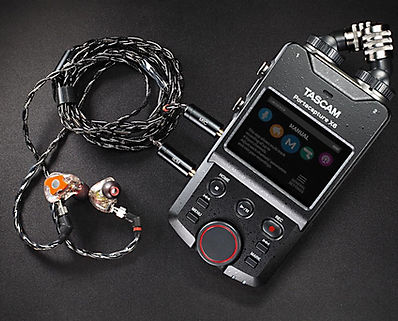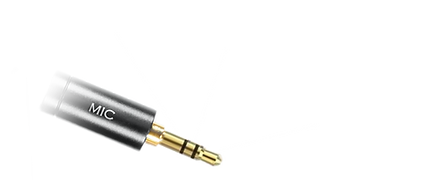
Thank you for choosing BIEM, binaural in-ear microphone developed by Avara, Verus Audio, and Seruniaudio. Unlike traditional stereo recording, this technology places the listener at the heart of the sound, creating a lifelike and spatial audio experience.
BIEM
USER GUIDE
Application
BIEM is suitable for field recording, ASMR content, VR content, podcasts, vlogs, and more.
Safety Instruction
-
Store in a safe and dry place
-
Roll the cable properly to prevent kinks
-
Connect the corresponding TRS jack to the designated devices I/O
Power Supply & Compatibility
The BIEM’s microphone requires a 3.5 mm TRS stereo mic input on the host device to operate properly. This input must supply plug-in power, which is commonly provided by devices such as handheld recorders or USB-C to stereo mic input converters.
Compatible devices include:
-
Handheld recorders: Zoom H1 series, H4 series, H5 (for H6 & H8 use XYH-6 ACC.); Tascam DR-05 series, DR-07 series, Portacapture X6, X8; Sony ICD series, PCM series; Olympus WS, LS, DM series*
-
USB-C to stereo mic input converter: Saramonic SR-C2003
-
Field recorders: Tascam DR-70 series, DR-701D*.
-
DSLR / Mirrorless camera that has stereo mic input with plug-in power enabled.
*)Please refer to your device’s manual to ensure that plug-in power is enabled via the 3.5 mm TRS input for external microphones. On some models—particularly from Tascam and Zoom—plug-in power must be manually activated in the settings menu.
For cable extensions, note that longer cables may lead to signal degradation. Only TRS (Tip-Ring-Sleeve) cables are compatible. TRRS and TS cables are not supported and may result in improper operation.


Connectivity
BIEM uses 3.5 mm TRS jacks for its input and output. The pin out for the mic is Tip = Left; Ring = Right; Sleeve = Ground. The IEM output pin-out is: Tip = Left Channel; Ring = Right Channel; Sleeve = Ground.
Sleeve (Ground)
Ring (Right Channel)
Tip (Left Channel)


Tip (Left Channel)
Ring (Right Channel)
Sleeve (Ground)
Technical Specification
In-Ear Monitor
Configuration
Frequency
Sensitivity
Impedance
Total Harmonic Distortion
Noise Isolation
Shell type
: Dual driver (1 DD & 1 BA)
: 20 - 20.000 Hz
: 112 dB SPL @1 kHx, 1 mW
: 12 Ohm @1 kHz
: ≤ 0.1 % @ 1kHz, 1mW
: - 25 dB (Universal fitting)
: Open vent shells design
IEM Frequency Response Diagram

Measured with GRAS RA0401 Coupler - GRAS 26AC-1-Rohde & Schwarz UPP and Complier with IEC 60318-4 and ITU-T Rec p.57 (08/96)
Microphones
Transducer Type
Sensitivity
Polar Pattern
Frequency Response
Impedance
Phase
Max. SPL
Signal to Noise Ratio
Power Requirement
Curent Consumption
Capsule Diameter
: Ultra-high Sensitivity ECM
: -29 dB ± 3 dB at 1 kHz
: Stereo / HRTF
: 20 - 20.000 Hz
: 2.3 kΩ ± 30% at 1 kHz
: 5° ± 10° at 30 Hz
: 120 dB
: 75 dB at 1 kHz
: Plugin power 3.3 volt
: 400 µA Max
: 5.8 mm
Mic Frequency Response Diagram

Cable
Cable Name
Cable Type
Core Gauge
Shield Gauge
I/O Connector
IEM Connector
Cable Length
Splitter
Insulation type
: Magni C4
: Bespoke OFC Copper Litz Coaxial Design 4 Braid
: 28.7 AWG
: 26.1 AWG
: Verus Customized Dual 3.5mm Gold Plated Brass
: Verus Customized IEM Connector
: 120 cm
: Verus Customized Y Split
: Flexible Insulation
Warranty
1 year limited warranty
terms and conditions may apply
Register your products here to claim your warranty